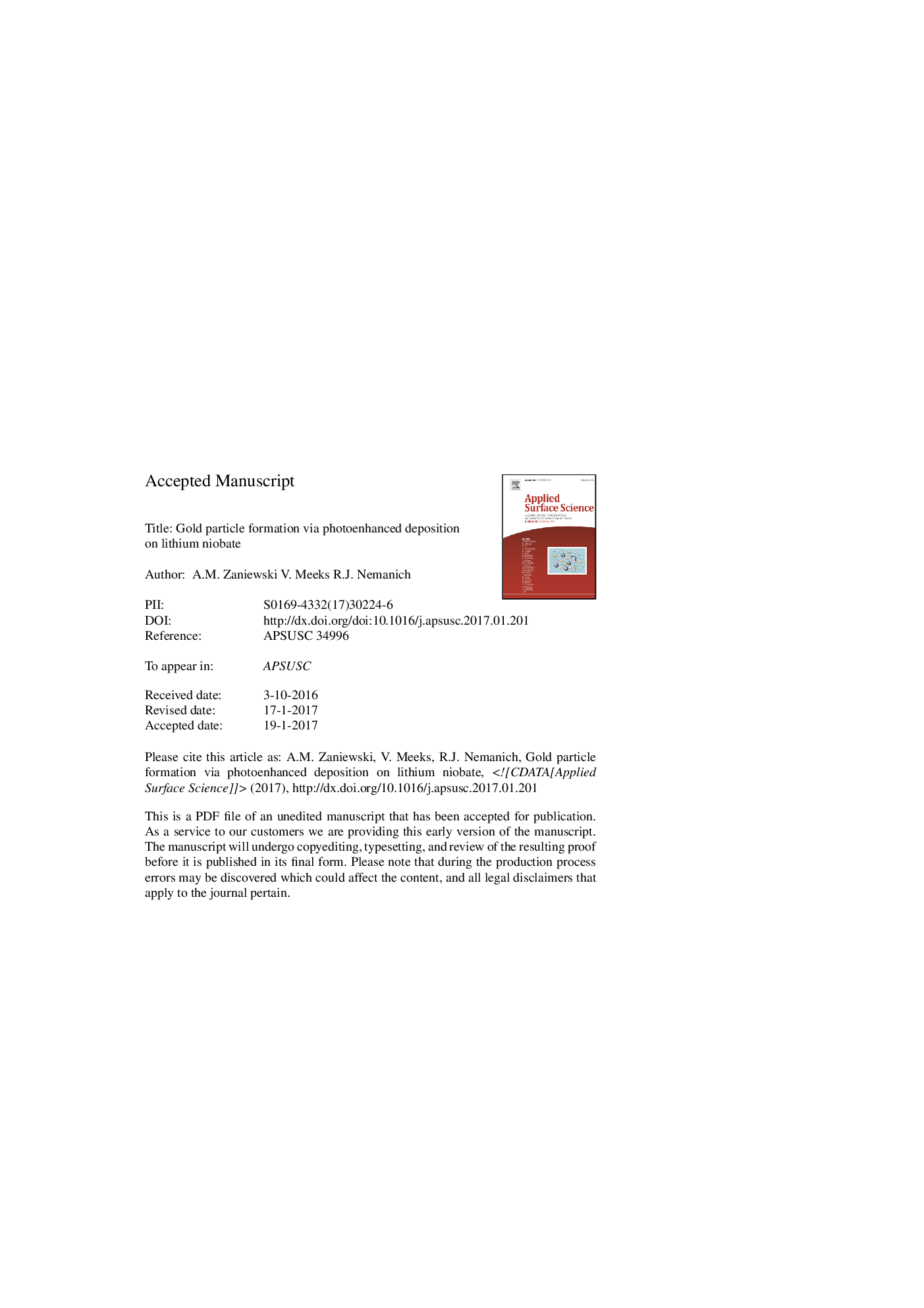| Article ID | Journal | Published Year | Pages | File Type |
|---|---|---|---|---|
| 5352154 | Applied Surface Science | 2017 | 20 Pages |
Abstract
In this work, we report on a technique to reduce gold chloride into sub-micron particles and nanoparticles. We use photoelectron transfer from periodically polarized lithium niobate (PPLN) illuminated with above band gap light to drive the surface reactions required for the reduction and particle formation. The particle sizes and distributions on the PPLN surface are sensitive to the solution concentration, with inhibited nucleation and large particles (>150Â nm) for both low (2Eâ8M to 9Eâ7M) and high (1Eâ5M to 1Eâ3M) concentrations of gold chloride. At midrange values of the concentration, nucleation is more frequent, resulting in smaller sized particles (<150Â nm). We compare the deposition process to that for silver, which has been previously studied. We find that the reduction of gold chloride into nanoparticles is inhibited compared to silver ion reduction, due to the multi-step reaction required for gold particle formation. This also has consequences for the resulting deposition patterns: while silver deposits into nanowires along boundaries between areas with opposite signed polarizations, such patterning of the deposition is not observed for gold, for a wide range of concentrations studied (2Eâ8 to 1Eâ3M).
Keywords
Related Topics
Physical Sciences and Engineering
Chemistry
Physical and Theoretical Chemistry
Authors
A.M. Zaniewski, V. Meeks, R.J. Nemanich,
